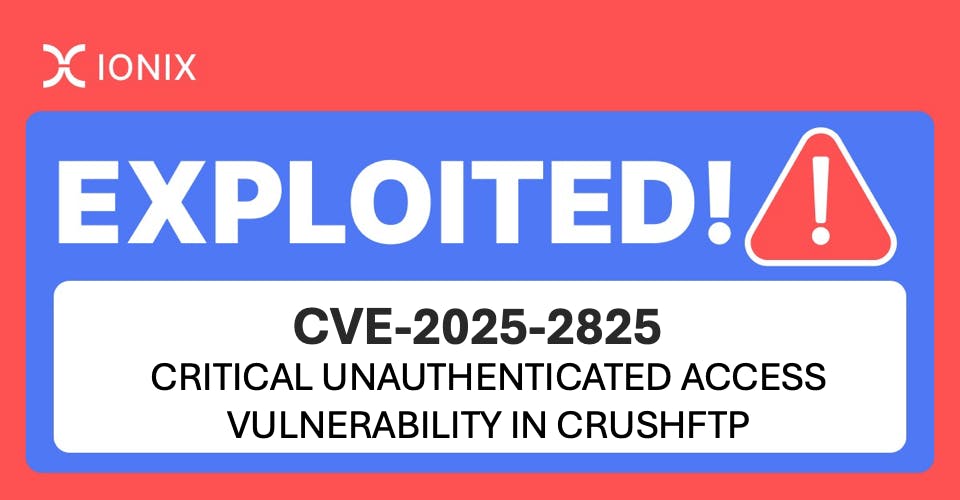Vulnerability Assessment Methodology: How to Perform a Vulnerability Assessment

There are flaws in every organization’s IT infrastructure, along with software that requires patching. These flaws could arise from various sources, such as human errors during software coding.
Hackers are always on the lookout to exploit these flaws and applications. However, by following a vulnerability assessment methodology to perform vulnerability assessments, organizations can identify these weaknesses before the cyber adversaries do. Regular assessments ensure that your data remains uncompromised and secure.
In this article:
- What is a Vulnerability Assessment?
- Why Should You Run a Vulnerability Assessment?
- 6 Steps to Performing a Vulnerability Assessment
- Keep Your Infrastructure Safe with IONIX
- Frequently Asked Questions
In this article
What is a Vulnerability Assessment?
A vulnerability assessment reviews an organization’s IT infrastructure, including its network, devices, and associated applications, to identify security weaknesses that malicious actors can take advantage of.
Vulnerability assessments simulate threats of varying severity to gauge the system’s response. The goal is to identify weak spots that threats could exploit, such as design flaws and misconfigurations.
These assessments can be conducted by an organization’s IT department or by a third party. It’s typically an automated process. Manual testing, where an individual simulates malicious activities, is known as penetration testing.
Why Should You Run a Vulnerability Assessment?
There are several benefits to conducting a vulnerability assessment. Overall, a vulnerability assessment helps an organization understand the overall level of risk to its infrastructure.
A vulnerability assessment can create an inventory of devices accessing the network and evaluate the security of each device. These assessments also help to identify data that may require additional security.
Other reasons to run a vulnerability assessment include:
- It helps you understand the methodologies bad actors may employ to gain access to your systems and sensitive data.
- It shows your customers that you take their security seriously, which helps to gain their trust.
- Regular vulnerability assessments may be required for regulatory compliance, depending on the regulations your organization is subject to. Failure to conduct assessments as required can result in penalties for non-compliance.
- Failure to conduct regular vulnerability assessments also leaves your sensitive data at risk of a data breach. Like failing to comply with required assessments, your company also may be subject to fines if it suffers a data breach.
- A data breach can result in lost business as consumers lose trust in your organization and its ability to secure sensitive data.
6 Steps to Performing a Vulnerability Assessment
A well-structured vulnerability assessment typically involves the following steps:
- Asset Discovery: The first step in the vulnerability assessment methodology involves conducting attack surface discovery to identify and catalog the assets within your organization’s IT infrastructure, as well as the digital supply chain. This lays the foundation for a thorough vulnerability assessment process, ensuring a comprehensive understanding of what’s at stake, including hardware, software, and network components.
- Vulnerability Scanning: Utilizing automated tools, this phase involves scanning the assets to identify known vulnerabilities, misconfigurations and other security posture issues. This step is central to the vulnerability assessment steps, as it provides a detailed insight into the risks of the assets.
- Prioritization: After identifying assets, the next step is to prioritize the risks based on their criticality and potential impact on business operations. This prioritization, a key aspect of vulnerability assessment methodologies, ensures efficient resource allocation by first focusing on the most significant risks.
- Analysis & Remediation: Post-scanning, the gathered data is analyzed to identify the required remediation steps for each risk based on its priority. This analysis guides the remediation process, where the most critical vulnerabilities are addressed first. This step is essential in the vulnerability assessment process for mitigating critical risks quickly and effectively reducing risk.
- Validation: Following remediation, it’s vital to reassess the system to ensure that vulnerabilities have been effectively resolved. This step, integral to vulnerability assessment methodologies, confirms the efficacy of the remediation efforts and identify lingering issues.
- Make it an Ongoing Process: Continuous monitoring is vital for an infrastructure to be truly secure, and it’s an essential component of vulnerability management and attack surface management. Regular vulnerability assessments can help identify new vulnerabilities or risks that might have cropped up since the previous assessment.
Keep Your Infrastructure Safe with IONIX
IONIX is a comprehensive attack surface management solution offering the widest coverage with the sharpest focus. IONIX leverages Connective Intelligence to:
- Determine your attack surface risk by conducting multi-level evaluations, including online applications, websites, and DNS servers.
- Identify risky connections between assets, including third-party web services.
- Quantify your attack surface risk, providing risk scores and enabling you to track your organization’s progress.
Book a demo today to learn how IONIX can help you reduce your organization’s attack surface risk.
Frequently Asked Questions
What are the 3 components of vulnerability assessment?
The three components of vulnerability assessment include:
- Asset Identification: This involves recognizing and categorizing assets within the infrastructure that might be vulnerable.
- Vulnerability Detection: This is the process of finding and listing the vulnerabilities of each identified asset.
- Vulnerability Evaluation: Here, the potential impact of each vulnerability is assessed, and its risk level is determined.
What are the three factors of vulnerability assessment methodology?
The three factors of vulnerability assessment methodology include:
- Breadth of Assessment: This refers to the scope and extent of the assessment. This factor determines how comprehensive the vulnerability assessment is across the organization’s infrastructure. It involves deciding which networks, systems, applications, and digital assets will be included in the assessment. This wide-ranging scope is crucial for ensuring no critical component is overlooked. For instance, an assessment could range from scanning the internal network to encompassing cloud services and remote endpoints.
- Depth of Assessment: This pertains to the granularity of the examination conducted on each asset. This factor focuses on how thoroughly each component is tested for vulnerabilities. It involves a detailed asset analysis, probing for potential weaknesses from various angles. This might include examining system configurations, checking for outdated software versions, or performing active security testing where security controls are validated at a granular level.
- Frequency of Assessment: Vulnerability assessment can never be a one-time activity, it needs to be continuous to provide real protection. The interval between each test or check can vary by the type of asset being tested. There can be some guidelines on how to determine the right frequency for assessments. For example, the more widely an asset is used across the organization, or the more critical the data it contains, the more frequently it needs to be tested.
The vulnerability assessment process unfolds methodically: defining the scope to pinpoint critical assets, scrutinizing each for vulnerabilities, and categorizing these based on their potential impact. This streamlined approach helps swiftly identify weaknesses and formulate targeted remediation strategies, bolstering the organization’s cybersecurity defenses.
How to conduct a vulnerability assessment?
A successful vulnerability assessment methodology involves several key steps. Initially, asset discovery is crucial to identify critical components in the network, aligning with established vulnerability assessment methodologies. The vulnerability assessment process then scans these assets using automated tools to detect security vulnerabilities. Analyzing and prioritizing the results based on severity and potential impact is vital to the vulnerability assessment steps. This is followed by drafting a detailed report and implementing remediation strategies. Finally, continuous assessment is integral to the methodology, ensuring ongoing protection against emerging threats.
What is NIST risk assessment methodology?
The NIST (National Institute of Standards and Technology) risk assessment methodology is a comprehensive approach outlined in the NIST Special Publication 800 series. It provides guidelines and frameworks for organizations to identify, categorize, prioritize, and manage cybersecurity risks.
The NIST risk assessment methodology promotes an ongoing risk assessment process that involves defining the scope of the assessment, identifying vulnerabilities, determining potential impacts, and suggesting risk mitigation strategies.
What is a vulnerability assessment tool?
A vulnerability assessment tool is an automated software solution that scans and identifies security vulnerabilities and misconfigurations within an organization’s IT infrastructure. These tools are integral to cybersecurity, systematically analyzing networks, systems, and applications to detect potential weaknesses. They identify vulnerabilities and categorize them by severity, aiding in prioritizing remediation efforts. Advanced tools go beyond severity scores by leveraging organizational context, exploitability testing, and threat intelligence to analyze risk and effectively prioritize remediation. Their role extends beyond detection, forming a critical part of ongoing cybersecurity risk management and ensuring organizations can proactively respond to emerging threats.






